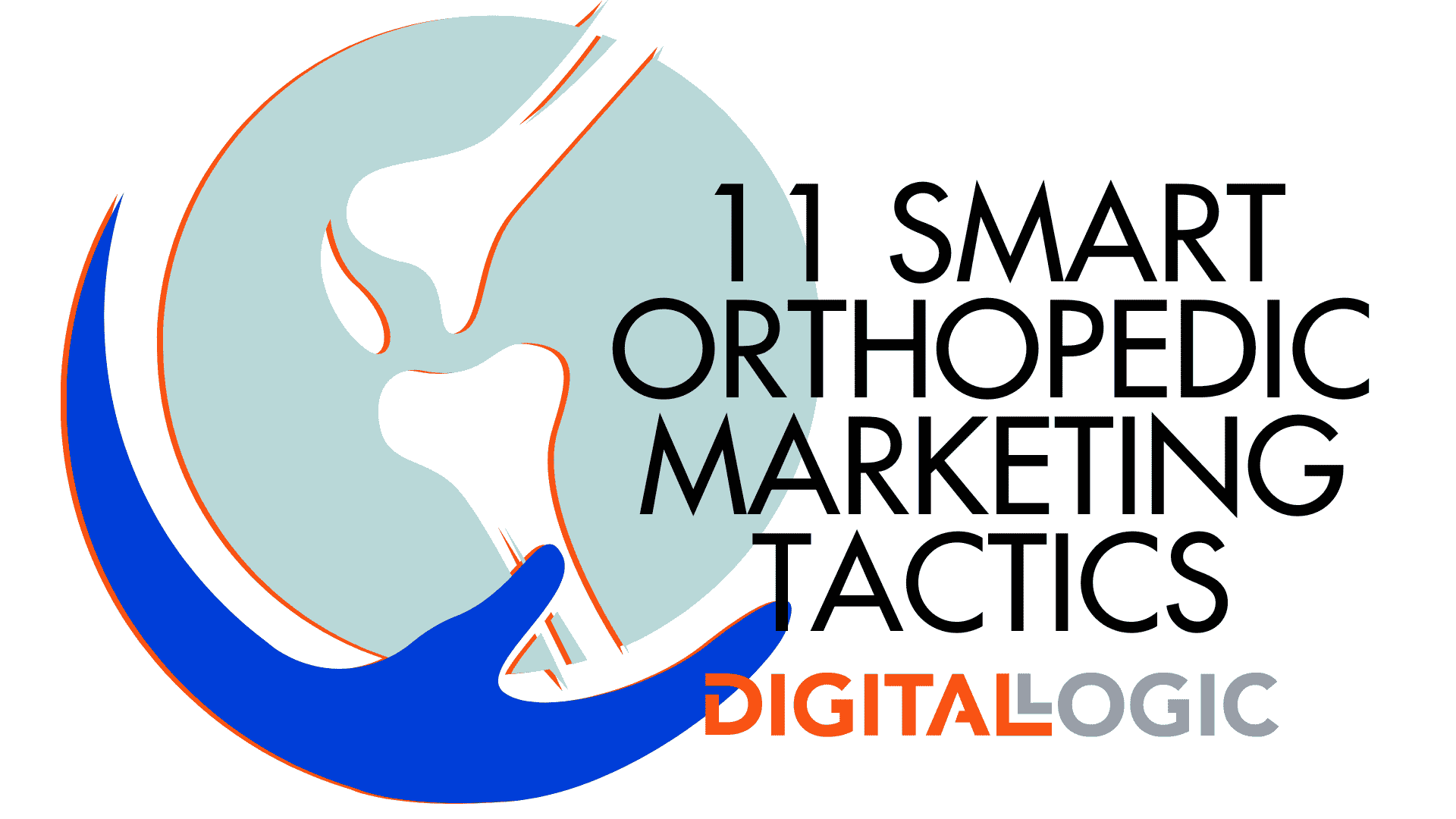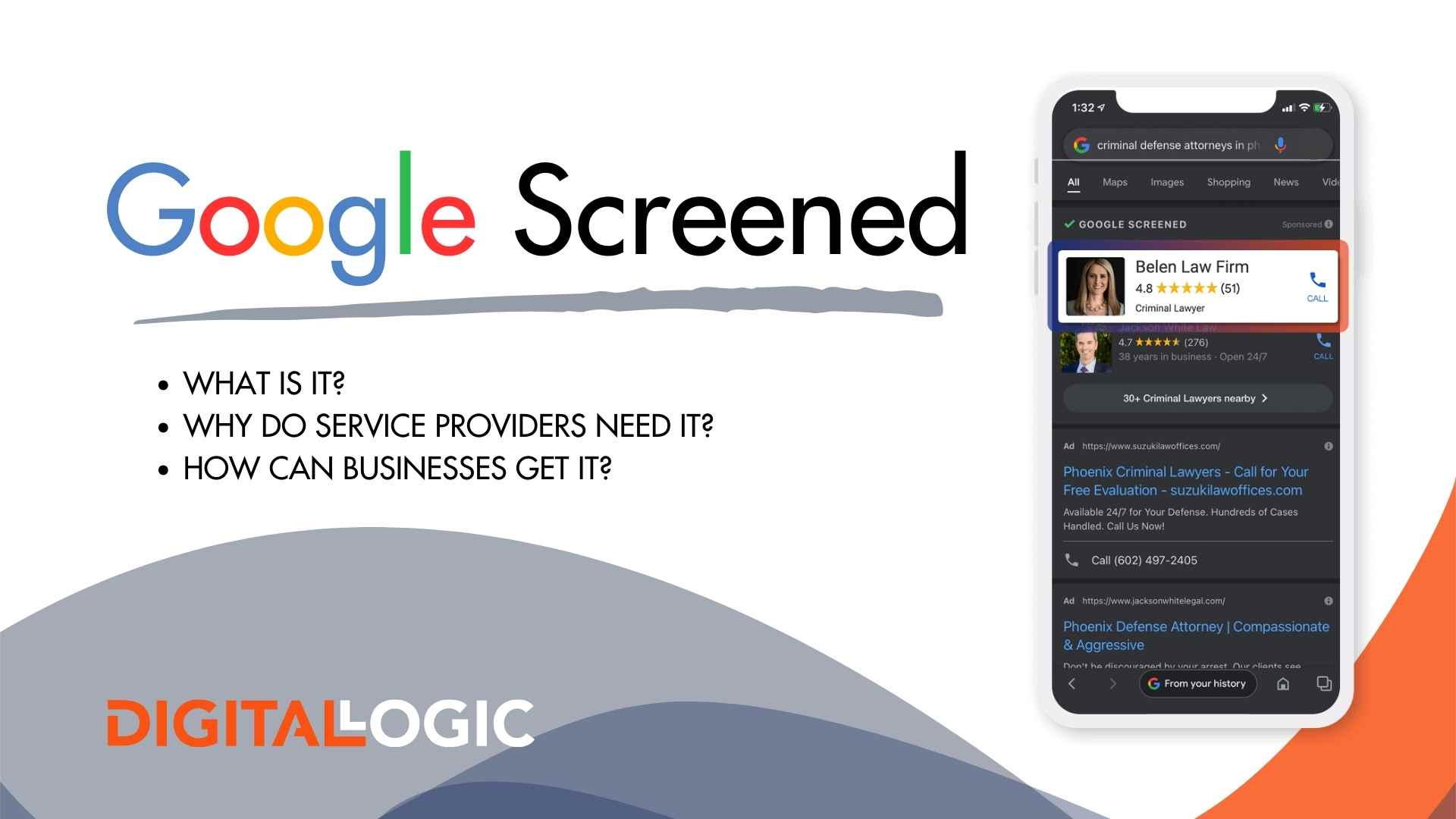Orthopedic marketing refers to the marketing strategies orthopedic surgeons and orthopedic providers, and practices use to attract new patients and increase awareness of their orthopedic surgery or orthopedic and sports medicine business. Orthopedic marketing has evolved almost 100% to digital marketing.
Everyone knows that smartphones have revolutionized the way we do… well, just about everything, including the way we find and interact with our physicians.
In fact, perhaps no one understands the way smartphones have changed the course of everyday human interaction more than physicians; after all, they’re the ones fielding questions from droves of people who got their MDs from Google.
But people aren’t just getting general medical advice from the Internet. The public, in general, is growing more reliant on search engines and social media for choosing a physician.
This phenomenon is usually ascribed only to young patients. However, what physicians and practitioners might not realize is that people in their 20s and 30s aren’t the only ones using smartphones. The modern patient is anywhere from 20 to 60, and they are seeking out information on Google, Facebook, and others.
In order to attract this more modern patient, practitioners must implement an appropriate practice marketing strategy that enables them to be found online.
Our Orthopedic Marketing Agency put this guide together to help you. If you’d like us to help you market your orthopedic practice, drop us a chat in the lower right side of the screen and we can see if it’s a good fit to work together.

 (source)
So what does this mean for you?
It means that independent orthopedic practices are not only competing with other independent orthopedic practices. They’re competing with hospitals with huge budgets and marketing departments, and the number of these practices owned and operated by hospitals is only growing.
These hospitals and the orthopedic practices they own are putting millions of dollars a year into marketing, and half of that is going to digital initiatives. Of course, independent practices don’t typically have that sort of extraneous revenue to fuel the marketing fires, but the thing to remember is that people don’t want to go to the hospital for everything!
The thing about hospital-owned practices is that the more small practices that get eaten up and absorbed into larger hospitals, the less competition there is in the healthcare industry in any given area. So while on paper, mergers and acquisitions seem to reduce costs to patients, once a hospital has a monopoly in a certain area, that gives them the opportunity to raise the costs of medical care in that area without losing any of their patient pool.
It isn’t all that hard, therefore, to convince folks to use independent orthopedic practices rather than hospital-owned ones, as long as you have an effective orthopedic marketing strategy.
Your next question should be: How to Grow an Orthopedic Practice? Let’s start…
(source)
So what does this mean for you?
It means that independent orthopedic practices are not only competing with other independent orthopedic practices. They’re competing with hospitals with huge budgets and marketing departments, and the number of these practices owned and operated by hospitals is only growing.
These hospitals and the orthopedic practices they own are putting millions of dollars a year into marketing, and half of that is going to digital initiatives. Of course, independent practices don’t typically have that sort of extraneous revenue to fuel the marketing fires, but the thing to remember is that people don’t want to go to the hospital for everything!
The thing about hospital-owned practices is that the more small practices that get eaten up and absorbed into larger hospitals, the less competition there is in the healthcare industry in any given area. So while on paper, mergers and acquisitions seem to reduce costs to patients, once a hospital has a monopoly in a certain area, that gives them the opportunity to raise the costs of medical care in that area without losing any of their patient pool.
It isn’t all that hard, therefore, to convince folks to use independent orthopedic practices rather than hospital-owned ones, as long as you have an effective orthopedic marketing strategy.
Your next question should be: How to Grow an Orthopedic Practice? Let’s start…
 This means that even if you rank high in Google searches if your website doesn’t immediately grab and keep the attention of anyone looking at it, you’ve just become one in a long list of “back” buttons. In turn, this means that your website must be fast and mobile-friendly.
Think of the last websites you looked at: did you even wait 60 seconds for it to load before clicking off? The same will go for your orthopedic practice site.
If you haven’t paid a lot of attention to your website, now might be the time to show it some love. One method of diagnosing any issues with your website is to have a family member or friend who is not familiar with the site give it a once-over on their phone, tablet, and desktop. If they can navigate it without any direction from you, you’re on the right track.
If you’d like to invest in professional orthopedic website development services, Digital Logic can help!
This means that even if you rank high in Google searches if your website doesn’t immediately grab and keep the attention of anyone looking at it, you’ve just become one in a long list of “back” buttons. In turn, this means that your website must be fast and mobile-friendly.
Think of the last websites you looked at: did you even wait 60 seconds for it to load before clicking off? The same will go for your orthopedic practice site.
If you haven’t paid a lot of attention to your website, now might be the time to show it some love. One method of diagnosing any issues with your website is to have a family member or friend who is not familiar with the site give it a once-over on their phone, tablet, and desktop. If they can navigate it without any direction from you, you’re on the right track.
If you’d like to invest in professional orthopedic website development services, Digital Logic can help!

 Professional Orthopedic SEO Services will optimize and streamline your website’s content in order to get you ranking higher in Google’s organic search results. SEO can also help to maximize the amount of time people spend on your website.
Here are only a few of the ways SEO can be a powerful tool in your orthopedic marketing toolbelt:
Professional Orthopedic SEO Services will optimize and streamline your website’s content in order to get you ranking higher in Google’s organic search results. SEO can also help to maximize the amount of time people spend on your website.
Here are only a few of the ways SEO can be a powerful tool in your orthopedic marketing toolbelt:

 The thing is, whoever you’re trying to market to, whether they be millennials, baby boomers, or some other group of folks not defined by their birth year, they’re probably spending a huge chunk of their day on Facebook, or some other form of social media.
Here are just a few ways you can use social media to market your orthopedic practice:
The thing is, whoever you’re trying to market to, whether they be millennials, baby boomers, or some other group of folks not defined by their birth year, they’re probably spending a huge chunk of their day on Facebook, or some other form of social media.
Here are just a few ways you can use social media to market your orthopedic practice:
 (source)
By incorporating live chat, you are making that person more comfortable and allowing yourself the opportunity to convert basic interest into a patient. And of course, your orthopedic practice’s phone number will always be on your website for those who are more inclined to phone calls than chat. For WordPress users, there are several WordPress live chat plugins to choose from.
(source)
By incorporating live chat, you are making that person more comfortable and allowing yourself the opportunity to convert basic interest into a patient. And of course, your orthopedic practice’s phone number will always be on your website for those who are more inclined to phone calls than chat. For WordPress users, there are several WordPress live chat plugins to choose from.
 When researching things online, consumers are required to, and indeed do, rely almost completely on reviews from other consumers.
It is also a good idea to include a page to showcase any awards your orthopedic practice has won.
When researching things online, consumers are required to, and indeed do, rely almost completely on reviews from other consumers.
It is also a good idea to include a page to showcase any awards your orthopedic practice has won.
 (source)
Despite this, video content is often overlooked as a method of marketing. It is completely irresponsible to do this. There are myriad benefits associated with video marketing, and the best part is, your videos don’t have to be complicated!
Some ideas for potential videos are:
(source)
Despite this, video content is often overlooked as a method of marketing. It is completely irresponsible to do this. There are myriad benefits associated with video marketing, and the best part is, your videos don’t have to be complicated!
Some ideas for potential videos are:

Why Should I Market My Orthopedic Practice?
Alright, it’s true that when you think of high-volume marketing and advertising, orthopedic practices aren’t the first businesses you think of, and traditionally, specialty medical practices don’t do a lot of advertising. So why change that now? There are two reasons. In the past, orthopedic surgeons thrived on referrals. In fact, in many cases, patients were required to have a referral from their primary care physician in order to see an orthopedic surgeon. So admittedly, in those days, it didn’t make much sense to do any orthopedic marketing; if there were no referrals, there was no business. These days, that is not the case. Many insurances do not require referrals for specialty physicians such as orthopedics. When patients need an orthopedic physician, they focus their efforts on researching orthopedic practices in their area online rather than obtaining a referral from their primary care physician. For this reason, practices must implement orthopedic marketing strategies that put the name of your practice in front of your potential patients. The old model of garnering referrals by cultivating relationships with PCPs is becoming increasingly inefficient. The second reason is hospital acquisitions; the bane of the independent medical practice. The number of physicians employed by hospitals, and the number of practices owned by hospitals, multiplies exponentially every year. Between 2012 and 2018, the number of hospital acquisitions rose by 128%.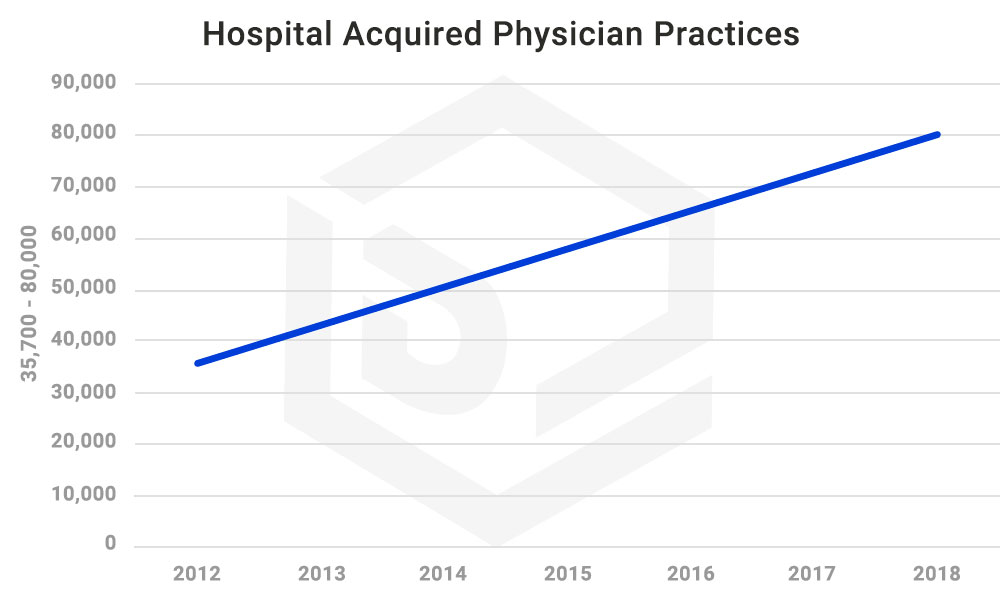 (source)
So what does this mean for you?
It means that independent orthopedic practices are not only competing with other independent orthopedic practices. They’re competing with hospitals with huge budgets and marketing departments, and the number of these practices owned and operated by hospitals is only growing.
These hospitals and the orthopedic practices they own are putting millions of dollars a year into marketing, and half of that is going to digital initiatives. Of course, independent practices don’t typically have that sort of extraneous revenue to fuel the marketing fires, but the thing to remember is that people don’t want to go to the hospital for everything!
The thing about hospital-owned practices is that the more small practices that get eaten up and absorbed into larger hospitals, the less competition there is in the healthcare industry in any given area. So while on paper, mergers and acquisitions seem to reduce costs to patients, once a hospital has a monopoly in a certain area, that gives them the opportunity to raise the costs of medical care in that area without losing any of their patient pool.
It isn’t all that hard, therefore, to convince folks to use independent orthopedic practices rather than hospital-owned ones, as long as you have an effective orthopedic marketing strategy.
Your next question should be: How to Grow an Orthopedic Practice? Let’s start…
(source)
So what does this mean for you?
It means that independent orthopedic practices are not only competing with other independent orthopedic practices. They’re competing with hospitals with huge budgets and marketing departments, and the number of these practices owned and operated by hospitals is only growing.
These hospitals and the orthopedic practices they own are putting millions of dollars a year into marketing, and half of that is going to digital initiatives. Of course, independent practices don’t typically have that sort of extraneous revenue to fuel the marketing fires, but the thing to remember is that people don’t want to go to the hospital for everything!
The thing about hospital-owned practices is that the more small practices that get eaten up and absorbed into larger hospitals, the less competition there is in the healthcare industry in any given area. So while on paper, mergers and acquisitions seem to reduce costs to patients, once a hospital has a monopoly in a certain area, that gives them the opportunity to raise the costs of medical care in that area without losing any of their patient pool.
It isn’t all that hard, therefore, to convince folks to use independent orthopedic practices rather than hospital-owned ones, as long as you have an effective orthopedic marketing strategy.
Your next question should be: How to Grow an Orthopedic Practice? Let’s start…
How to Optimize an Orthopedic Website
You would be absolutely amazed by how high the standards are for websites, and not to mention its the first impression your potential clients will have of you. Why wouldn’t you want it to be perfect? Search engine users click on a lot of sites, very quickly. Most Google search sessions last less than a minute. Research also shows that users are most likely to leave a website in the first ten seconds after clicking on it.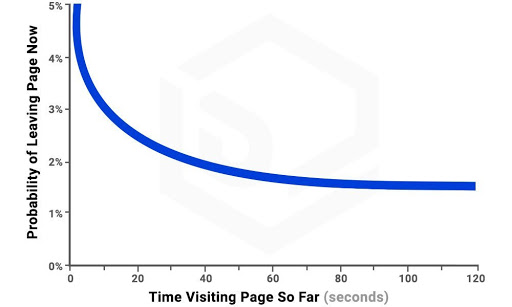 This means that even if you rank high in Google searches if your website doesn’t immediately grab and keep the attention of anyone looking at it, you’ve just become one in a long list of “back” buttons. In turn, this means that your website must be fast and mobile-friendly.
Think of the last websites you looked at: did you even wait 60 seconds for it to load before clicking off? The same will go for your orthopedic practice site.
If you haven’t paid a lot of attention to your website, now might be the time to show it some love. One method of diagnosing any issues with your website is to have a family member or friend who is not familiar with the site give it a once-over on their phone, tablet, and desktop. If they can navigate it without any direction from you, you’re on the right track.
If you’d like to invest in professional orthopedic website development services, Digital Logic can help!
This means that even if you rank high in Google searches if your website doesn’t immediately grab and keep the attention of anyone looking at it, you’ve just become one in a long list of “back” buttons. In turn, this means that your website must be fast and mobile-friendly.
Think of the last websites you looked at: did you even wait 60 seconds for it to load before clicking off? The same will go for your orthopedic practice site.
If you haven’t paid a lot of attention to your website, now might be the time to show it some love. One method of diagnosing any issues with your website is to have a family member or friend who is not familiar with the site give it a once-over on their phone, tablet, and desktop. If they can navigate it without any direction from you, you’re on the right track.
If you’d like to invest in professional orthopedic website development services, Digital Logic can help!
Run a Targeted Google AdWords Campaign for Orthopedic Clinics
Next time you Google something, take a look at the very top of the results. You’ll notice that the top few results are labeled “Ad”. Ever wondered how and why those results got there? Apart from being the undisputed champion in the search engine arena, Google also functions as a powerful advertising platform dubbed Google AdWords. So here’s how it works, and how to use it to your orthopedic marketing advantage: There are two types of search results a person gets when they put a query into Google: organic search results, and paid advertisements. For this section, we’ll stick with the paid advertisements. These appear above the organic search results, so even if your competition outranks you organically, you can still appear above them in the search results. Google AdWords allows you to craft various ads and have them appear for certain keyword searches. For instance, imagine you own an orthopedic practice in Shreveport, Louisiana. Some keywords you would probably want to use for orthopedic marketing purposes are: orthopedic doctor Shreveport, orthopedic surgeon Louisiana, etc. If you specialize in knees, maybe you’d want to rank for “knee specialist Louisiana” or “knee specialist Shreveport”. Google AdWords assigns a rank to advertisements based on a process referred to as the bid auction. It can be intimidating at first, but once you get the hang of it, it can even be fun! Let’s say you’ve chosen “orthopedic surgeon Shreveport” as your keywords. You create a short ad with a headline, a few lines of ad copy, and then you establish a daily budget and a maximum bid (the most money you’re willing to pay for every click). Google will assign you a quality score based on any past ads you might have run, in combination with your maximum bid. In this way, they will place ads in their open ad slots. This can mean in the beginning you may have to have a higher maximum bid to make up for a lack of quality score, but the longer you run successful orthopedic marketing ads with Google AdWords, the less you’ll have to bid, and the less money you’ll have to spend for good ad slots. As far as what you should bid on, that depends on what you want people to be Googling to trigger your ads. However, a powerful piece of advice is to bid on your own brand. This may seem like a no-brainer, or on the other hand, it may seem unnecessary, because you will of course rank as number one in the organic search results for your own brand. Remember, though, that paid advertisements appear higher up than organic ones. Though it may be considered dirty tactics, if you are not bidding on keywords that include your brand, there’s nothing stopping your competition from scooping those ad slots up for very little money. It wouldn’t exactly be great if someone puts your brand into Google and your competition’s ads pop up above your site in the search results. Google also keeps detailed analytics reports that allow you to see which of your ads are working, and exactly how many conversions (actual patients) they’re getting you. This helps tremendously, especially for larger orthopedic practices or for those running hospital PPC advertising campaigns.Geotargeting
Google also has plenty of features that allow you to narrow and focus your audience, ensuring that you’re getting the absolute most bang for your buck. One of the most effective of these strategies is geofencing, or geotargeting. When you are attempting to drive traffic to a brick-and-mortar location such as an orthopedic practice, it doesn’t really help to advertise to people in a city two hours away from yours. For this purpose, you can enable geofencing, or geotargeting, on your ads. What this means is that anyone searching your keywords outside of a virtual boundary set by you will not see your ads.Negative Keywords
This is a feature offered by Google that you should absolutely take advantage of in your orthopedic marketing endeavors. Negative keywords are keywords you do not want to trigger your ads. For instance, if you are an orthopedic surgeon who only operates on knees, search engine users searching for “hip replacement” are not likely to turn into actual clients for you any time soon. However, if they happen to click on your ad if it turns up in their search, that costs you money with no chance of acquiring a patient. To prevent this, you can add “hip replacement” to your list of negative keywords so that users searching those terms do not see your ads. However, it isn’t really necessary to think of every single keyword that does not apply to your orthopedic practice and add it to the negative keywords list. That would be extremely labor-intensive and pretty impossible besides. Google will allow you to look at a “search query report” that will let you see what people are Googling to trigger your ads. You can choose your negative keywords from there.Ad Extensions
Ad extensions are free tools provided by Google to clarify and enhance your ads. Some of the most popular ad extensions are:- Sitelinks lets you add more links to your ad
- Call-outs will let you promote certain features or offers in your ad, such as years of experience you have as an orthopedic surgeon
- Call extensions, or click-to-call, lets you add phone numbers to the ad
- Location extensions allow you to place your orthopedic practice’s address within your ad

SEO For Orthopedic Practices
Alright, so we made it through paid Google advertisements. Now let’s talk about organic search results. How does one make it to the top of those, pray tell? The answer, friends, is SEO, or search engine optimization.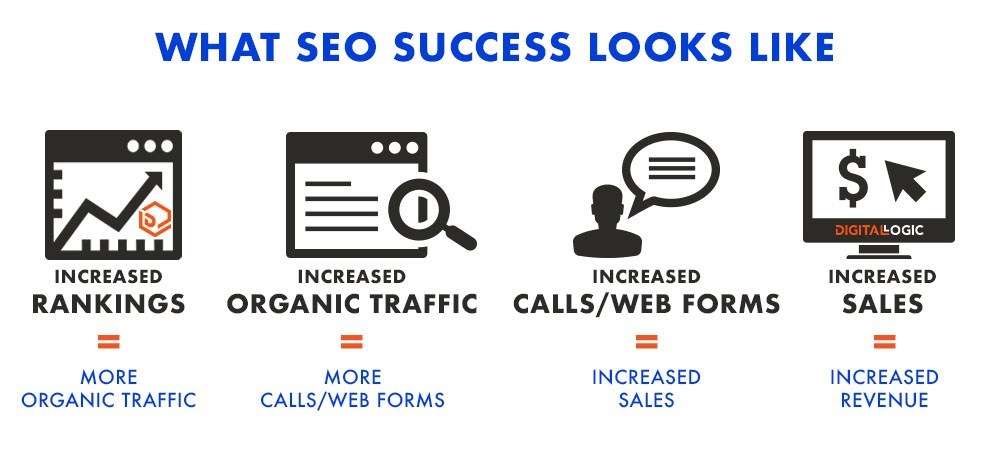 Professional Orthopedic SEO Services will optimize and streamline your website’s content in order to get you ranking higher in Google’s organic search results. SEO can also help to maximize the amount of time people spend on your website.
Here are only a few of the ways SEO can be a powerful tool in your orthopedic marketing toolbelt:
Professional Orthopedic SEO Services will optimize and streamline your website’s content in order to get you ranking higher in Google’s organic search results. SEO can also help to maximize the amount of time people spend on your website.
Here are only a few of the ways SEO can be a powerful tool in your orthopedic marketing toolbelt:
- Optimizing images on your website and adding keyword-rich descriptions
- Adding schema for orthopedic practices (schema is code that helps search engines like Google understand what your website is about)
- Adding relevant keywords in title, image, and heading tags
- Link-building, or obtaining links on other reputable websites that link back to your site. The more backlinks you have, the higher your site will rank on Google.
- Optimizing your landing pages (pages on your website on which potential patients will “land” when clicking on your ads) with relevant keywords
- Focusing on long-form content rather than short-form content. Google ranks posts or articles with 1000 words or more over anything with fewer words.

Local SEO
There is also the small matter of local SEO, which is slightly different than normal SEO. The goal of local SEO is to get you ranking for the services you offer in your area. Go ahead, do some Google searches for various services. Between the paid ads and the organic search results, you’ll see a list of Google Map results. This is where you want to be. When someone Googles “orthopedic practice” in your area, you want to be at the top of this list of local results. The way you accomplish this is through your Google My Business profile. An SEO professional working on local SEO can help you optimize this profile to get your orthopedic practice to the top of those location results. Still a little unsure about whether or not your orthopedic marketing strategy could use a little SEO? Go to an Incognito window in Google and do some searches for all the things you want to rank for. If you aren’t in the top results for your top 5 searches, you need some SEO.Social Media Marketing
Look, it’s not going away. Social media has become an integral part of our lives, and should thus be an integral part of your orthopedic marketing strategy. The thing is, whoever you’re trying to market to, whether they be millennials, baby boomers, or some other group of folks not defined by their birth year, they’re probably spending a huge chunk of their day on Facebook, or some other form of social media.
Here are just a few ways you can use social media to market your orthopedic practice:
The thing is, whoever you’re trying to market to, whether they be millennials, baby boomers, or some other group of folks not defined by their birth year, they’re probably spending a huge chunk of their day on Facebook, or some other form of social media.
Here are just a few ways you can use social media to market your orthopedic practice:
- Claim Your Listings. Services like Yelp and Foursquare allow anybody to create listings for a business that does not already have a listing. If you don’t create the listing for your orthopedic practice, you risk someone else doing so, and losing control of what gets said or posted there.
- Promote Your Brand. This is an opportunity to connect with your community and give your business a little flare of personality. However, try to avoid using too much slang. You should still remain at least marginally professional.
- Social Media Advertising. Just like Google, social media sites like Facebook and LinkedIn have robust advertising platforms that you can utilize.
Add Live Chat to Your Website
I know it sounds like a terrible idea giving away free advice all day on your website’s live chat; however, this isn’t the case at all. When someone first lands on your website, the goal of your orthopedic marketing strategy is to convert that person from someone simply browsing the site to an actual patient. Many people, especially younger people, feel far more comfortable with a chat or text feature than picking up the phone and making a call. (source)
By incorporating live chat, you are making that person more comfortable and allowing yourself the opportunity to convert basic interest into a patient. And of course, your orthopedic practice’s phone number will always be on your website for those who are more inclined to phone calls than chat. For WordPress users, there are several WordPress live chat plugins to choose from.
(source)
By incorporating live chat, you are making that person more comfortable and allowing yourself the opportunity to convert basic interest into a patient. And of course, your orthopedic practice’s phone number will always be on your website for those who are more inclined to phone calls than chat. For WordPress users, there are several WordPress live chat plugins to choose from.
Demonstrate Credibility and Authority
Including positive testimonials from former patients is one of the best ways to convert potential clients browsing your website. Your most satisfied patients will likely be more than happy to give you a few minutes of their time to write one of these testimonials. When researching things online, consumers are required to, and indeed do, rely almost completely on reviews from other consumers.
It is also a good idea to include a page to showcase any awards your orthopedic practice has won.
When researching things online, consumers are required to, and indeed do, rely almost completely on reviews from other consumers.
It is also a good idea to include a page to showcase any awards your orthopedic practice has won.
Digital Video For Orthopedic Marketing
More people are consuming video than ever before; YouTube is the second largest search engine in the world, right behind Google.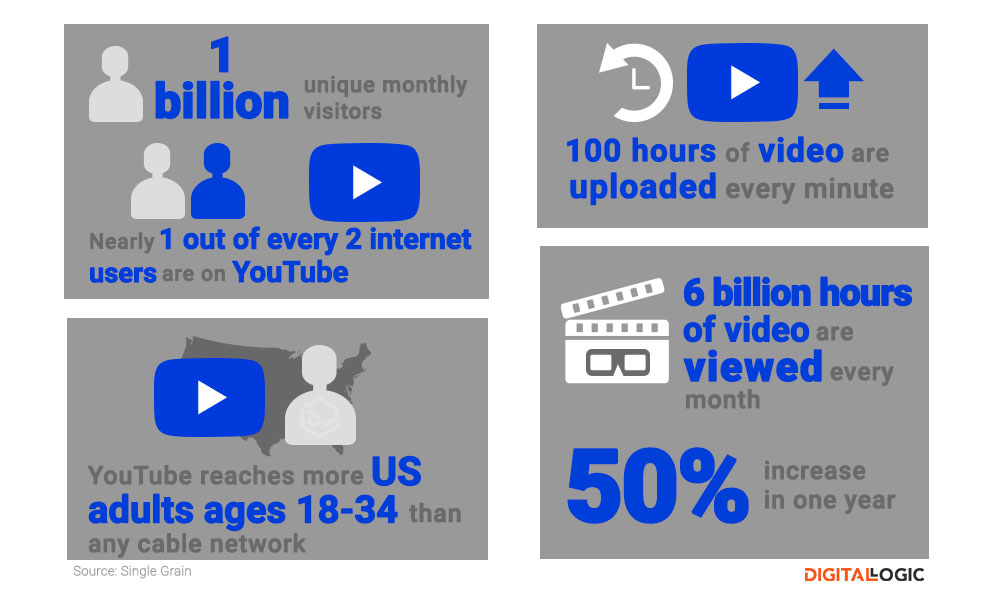 (source)
Despite this, video content is often overlooked as a method of marketing. It is completely irresponsible to do this. There are myriad benefits associated with video marketing, and the best part is, your videos don’t have to be complicated!
Some ideas for potential videos are:
(source)
Despite this, video content is often overlooked as a method of marketing. It is completely irresponsible to do this. There are myriad benefits associated with video marketing, and the best part is, your videos don’t have to be complicated!
Some ideas for potential videos are:
- Introducing your staff. This is a great way to garner trust and interest from your potential patients.
- Providing a behind-the-scenes look at your practice.
- Feature client reviews and testimonials. This can often be even more powerful than text reviews or testimonials.
- Provide instruction or education. This is also part of building up your credibility and authority.
Videos in the Waiting Room
Though this doesn’t have very much direct effect on your online orthopedic marketing strategy, it can go a long way towards making a good impression on first-time clients, and make them more likely to recommend your orthopedic practice to their friends. Those instructional, educational, or introductory videos you’re posting to YouTube? Play them every now and then in your waiting room. This is yet another way to showcase your authority and credibility and award you the persona of being exceedingly modern.Patient Newsletters for Orthopedic Practices
An email newsletter is a great way to stay in touch with your patients, and also to get your content out there. It’s pretty simple: patients who opt into the newsletter give you their email and are added to the list. At regular intervals, maybe once a week, maybe once a month, they get your newsletter in their email. Things you can include in the newsletter could be:- Snippets of your latest blog post
- Information about any awards your orthopedic practice has recently received
- Introductions to any new staff members
- Human interest stories. Take a scroll down your Facebook feed; human interest pieces are thriving more than ever. If you’ve enacted a particularly successful treatment or performed a challenging surgery, or if you have a patient who has overcome significant obstacles, get the appropriate permissions to include this in your newsletter.
